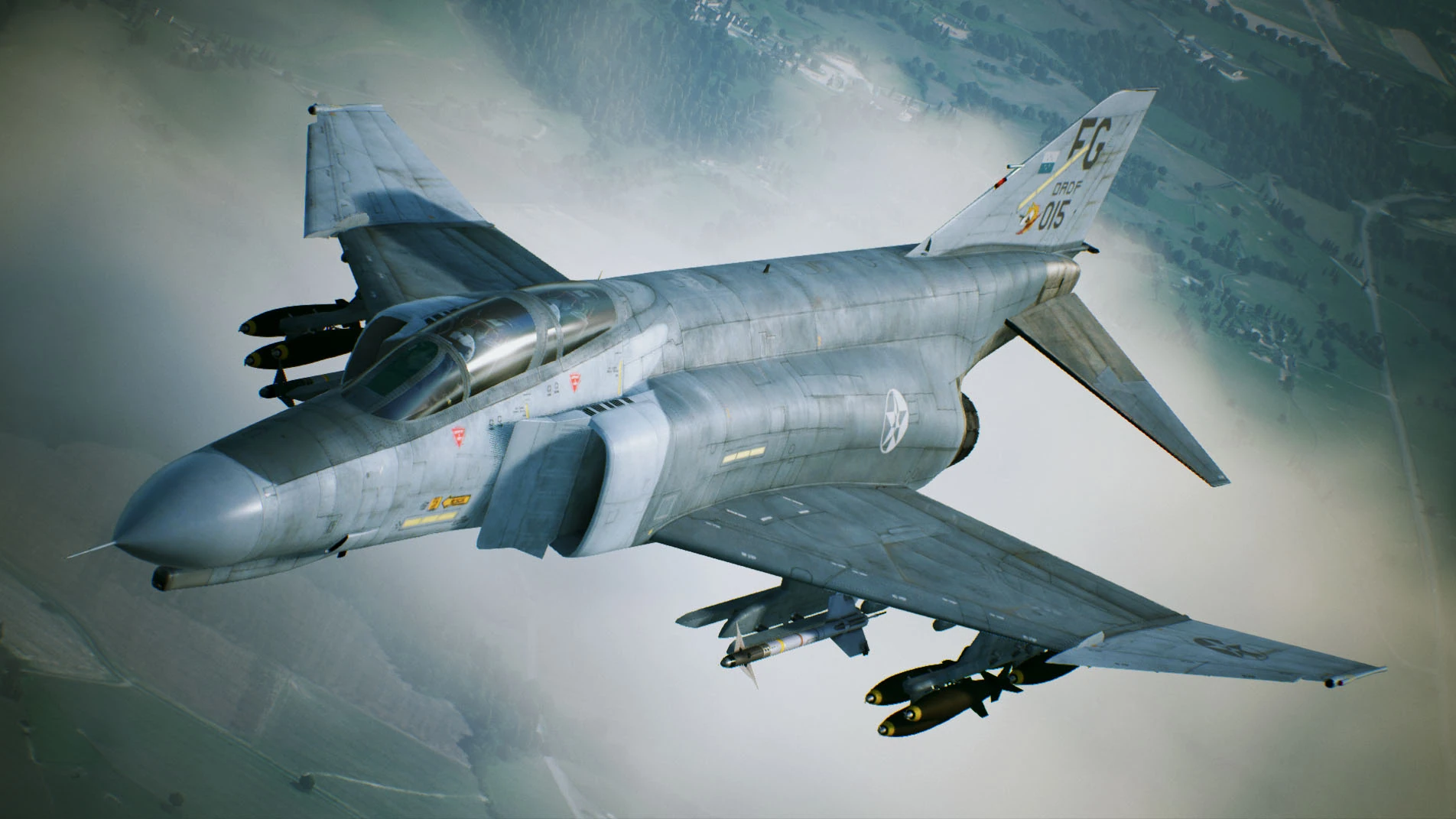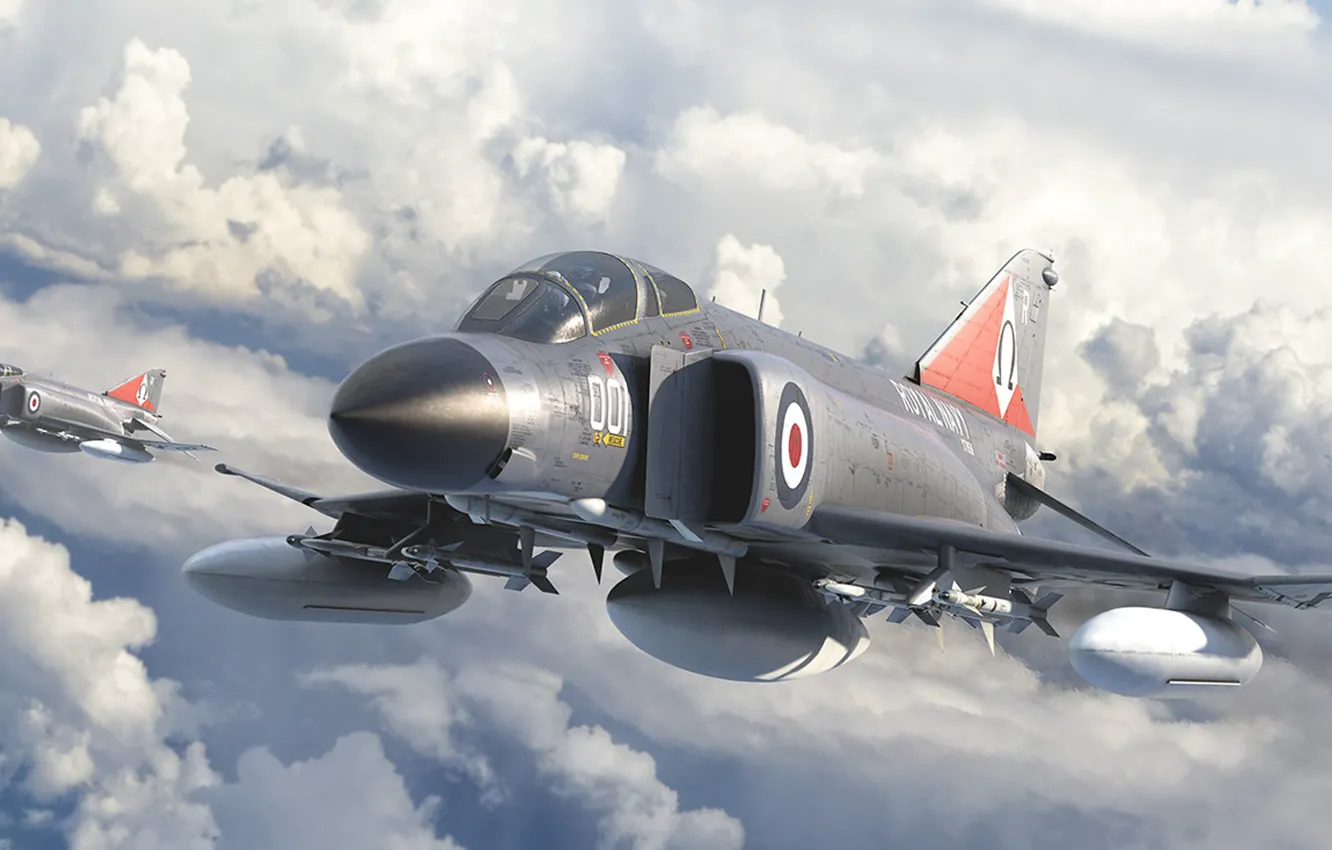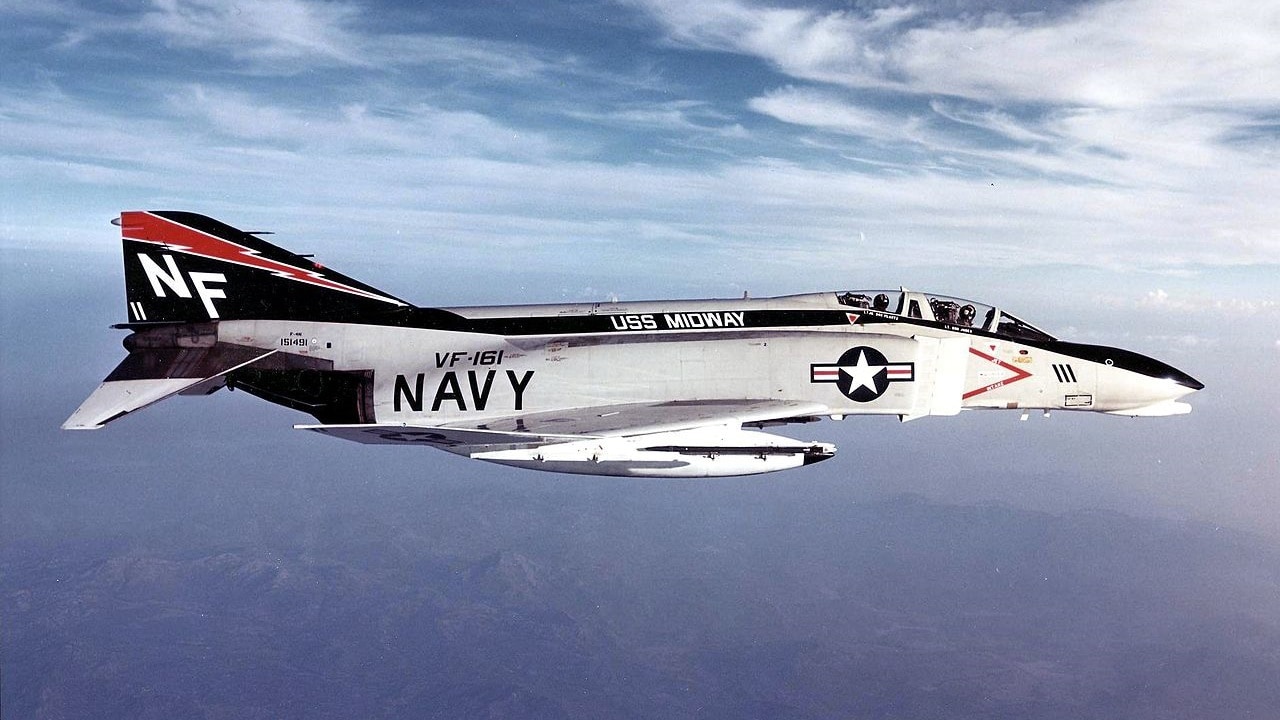Fighter Jet Phantom - Although every effort has been made to follow the rules of citation style, there may be some differences. If you have any questions, please refer to the appropriate style manual or other sources.
F-4, also called Phantom Ii, two-seat, twin-engine jet fighter built by the McDonnell Aircraft Corporation (later the McDonnell-Douglas Corporation) for the United States and many other countries. The first F-4 was delivered to the US Navy in 1960 and the Air Force in 1963. By the time it went out of production in 1979, more than 5,000 Phantoms had been built, becoming one of the most. successful fighter aircraft since World War II.
Fighter Jet Phantom

In its original versions, the F-4 had a wingspan of 38 ft 5 in (11.7 m) and a length of 58 ft 3 in (17.7 m). The wings fold for carrier storage in the marine version. Powered by two General Electric turbojets, each generating nearly 18,000 pounds (80 kilonewtons) of thrust with afterburners lit, the plane can accelerate to more than twice the speed of sound. The operational ceiling was over 50,000 feet (15,000 m).
Oil Painting F4 Phantom Ii Fighter Jet Usaf Air Force Military Aviation Plane
The first F-4s were armed only with air-to-air missiles, but after suffering heavy losses to Soviet-built MiG fighters over North Vietnam, they were equipped with 20-millimeter cannons for more effective dogfighting. They also carried bombs and missiles under their wings to attack surface targets - as in the Vietnam War and also in the Arab-Israeli War of 1973, when they led Israeli attacks on Egyptian and Syrian airfields and missile batteries.
In the early 1970s, the F-4 was retired as a front-line fighter by the US Navy and Air Force, but it continued to serve as a trainer, in radar-equipped reconnaissance versions, and as a "Wild Weasel"- aircraft equipped to detect and destroy radar installations and missile batteries. Do you have dreams of storming the control tower after a day of barrel rolling and air-to-air training against those waves on the red team, then jumping on your pigs and sailing to the beach to soak yourself in the sunlight? and play a spirited game of volleyball - while maintaining eye contact with your friends for far too long?
Now you can make those dreams a reality thanks to the folks at Platinum Fighters: For a cool $4 million, they're selling your very own F-4 Phantom II.
The Phantom McDonnell Douglas F4H-1F Phantom II Bu.145310 - a pre-production variant and the 11th produced before the aircraft was finally redesignated as the F-4 in September 1962 - is for sale for $3.95 million, Warbirds said News on March 14 reported. 45 F4H-1F Phantoms were ever built using an earlier version of the J-79 turbojet that appeared in the mass-produced F-4s that first took to the skies in 1959. pretty close to being flight ready, according to The War Zone.
A Mcdonnell Douglas F 4 Phantom Ii Supersonic Jet Interceptor And Fighter Bomber Of The Turkish Air Force At Riat 2019 Stock Photo
If you've got the money, why not show off the plane, which was also the first in the F-4 family to be equipped with hardpoints to carry bombs — and, as Warbirds News notes, the US military subsequently helped out to convince that the warplane can function both as a tactical fighter and bomber. It just needs a little work to upgrade its engines, activate its ejection seats and tinker with its avionics.
So if you've got a few million lying around, be prepared to drop a few more—and that's before you even count gas.
James Clark is a staff writer for Task & Purpose. He is a former Marine combat correspondent and a veteran of the war in Afghanistan. You can reach him by email at [email protected]. Follow James Clark on Twitter An American tandem two-seat, twin-engine, all-weather, long-range supersonic jet interceptor and fighter-bomber originally developed by McDonnell Aircraft for the United States Navy.

Before being adopted by the United States Marine Corps and the United States Air Force, and by the mid-1960s it had become a major part of their air force.
F4 Phantom Tiger F 4 Fighter Aircraft .jpg
Phantom production lasted from 1958 to 1981 with a total of 5,195 aircraft built, making it the most produced US supersonic military aircraft in history, cementing its position as an iconic fighter of the Cold War.
The Phantom is a large fighter with a top speed of over Mach 2.2. It can carry more than 18,000 pounds (8,400 kg) of weapons on nine external hardpoints, including air-to-air missiles, air-to-ground missiles and various bombs. The F-4, like other interceptors of its time, was initially designed without an internal cannon. Later models included an M61 Vulcan rotary cannon. Since 1959 it has set 15 world records for performance in flight,
The F-4 was used extensively during the Vietnam War. It served as the main air superiority fighter for the US Air Force, Navy and Marine Corps and became important in ground attack and aerial reconnaissance roles late in the war. During the Vietnam War, one US Air Force pilot, two Weapons Systems Officers (WSOs),
One US Navy pilot and one Radar Intercept Officer (RIO) bested five aerial reconnaissance kills against EMY fighters.
When F 4 Phantom Ii Outran A F/a 18 Hornet
The F-4 continued to make up a large part of the US Army's air force throughout the 1970s and 1980s, gradually being replaced by more modern aircraft such as the F-15 Eagle and F-16 Fighting Falcon in the US Air Force, the F-14 Tomcat in the US Navy, and the F/A-18 Hornet in the US Navy and US Marine Corps.
The F-4 Phantom II remained in use by the United States in the reconnaissance and Wild Weasel (Suppression of emy Air Defses) roles during the 1991 Gulf War, finally leaving service in 1996.
It was also the only aircraft used by both US flight demonstration teams: the United States Air Force Thunderbirds (F-4E) and the United States Navy Blue Angels (F-4J).

The F-4 was also operated by the armed forces of 11 other nations. Israeli Phantoms saw extensive combat in several Arab-Israeli conflicts, while Iran used its large fleet of Phantoms, acquired before the fall of the Shah, in the Iran-Iraq War. As of 2021, 63 years after its first flight, the F-4 remains in active service with the air forces of Iran, South Korea, Greece and Turkey. The aircraft was mostly in service against the Islamic State group in the Middle East.
Mcdonnell Fh 1 Phantom I
In 1952, McDonnell's head of aerodynamics, Dave Lewis, was appointed by CEO Jim McDonnell to be the company's interim design manager.
With no new aircraft competitions on the horizon, internal studies concluded that the Navy had the greatest need for a new and different aircraft type: a strike fighter.
In 1953, McDonnell Aircraft began work on revising its F3H Demon Naval Fighter, seeking expanded capabilities and better performance. The company developed several projects, including a variant powered by a Wright J67 Gine,
The J79-powered version promised a top speed of Mach 1.97. On September 19, 1953, McDonnell approached the US Navy with a proposal for the "Super Demon". Unique was that the aircraft had to be modular, as it could be fitted with a single or two-seat nose for different missions, with different nose cones for radar, photo cameras, four 20 mm (.79 in) cannons or 56 FFAR to accommodate unguided missiles in addition to the nine hardpoints under the wings and fuselage. The Navy was interested enough to order a full-scale model of the F3H-G/H, but felt that the upcoming Grumman XF9F-9 and Vought XF8U-1 already satisfied the need for a supersonic fighter.
The F 4 Is A Great Fighter With A Bad Reputation
The McDonnell design was therefore converted into an all-weather fighter-bomber with 11 external hardpoints for weapons and on 18 October 1954 the company received a letter from Intt for two YAH-1 prototypes. On May 26, 1955, four naval officers arrived at McDonnell's offices and within an hour presented the company with a relentless new set of demands. Since the Navy already had the Douglas A-4 Skyhawk for ground attack and the F-8 Crusader for dogfighting, the project now met the need for an all-knowing Fleet Defense Interceptor. A second crew member was added to operate the powerful radar;
The XF4H-1 is designed to carry four semi-integrated AAM-N-6 Sparrow III radar-guided missiles, and to be powered by two J79-GE-8 Gines. As in the McDonnell F-101 Voodoo, the engines sat low in the fuselage to maximize internal fuel capacity and airflow through fixed geometry intakes. The thin section wing had a 45° leading edge and was fitted with blown flaps for better low speed handling.
To avoid redesigning the aircraft's titanium central section, McDonnell Gineers beveled only the outer parts of the wings with 12 ° angles, which averaged to the required 5 ° over the tire span. The wings also received the characteristic "dog tooth" for improved control at high angles of attack. The all-moving tailplane has been given 23° of anhedral control to improve at high angles of attack, while still keeping the tailplane clear of the exhaust.

In addition, the air tasks were planned with a fixed ramp and a variable geometry ramp with an angle to give maximum pressure recovery between Mach 1.4 and Mach 2.2. Air flow matching between the intake and gin was
You Can Now Buy Your Very Own F 4 Phantom Fighter Jet For A Total Steal
Ruger 556 review, vg6 epsilon 556 review, msar stg 556 review, sinn 556 review, sinn 556 i review, meridian 556 review, eotech 556 review, precor efx 556 elliptical review, benchmade 556 review, surefire sfmb 556 review, precor efx 556 review, sinn 556 anniversary review
0 Comments